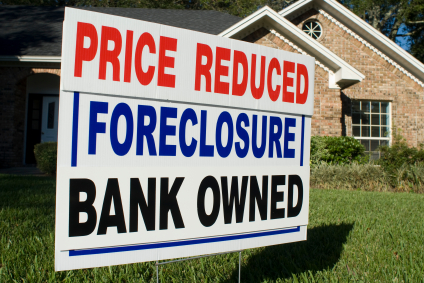Are rising interest rates, care of the Federal Reserve, really bad for the home mortgage market? Reading the headlines, you would think the world has ended with a one point move up in the annual percentage rate or APR on a typical mortgage. But don’t accept the simple answer when pondering the world of mortgage finance. Today, getting a mortgage is more a function of politics than of interest rates and only the best borrowers need apply.
In fact, during the 2000s, let us recall that there was an inverse correlation between mortgage production trends and interest rates. Even as coupons rose from 2004 until 2007, loan volumes actually increased. Production in non-prime loans was relatively insensitive to Fed interest rate movement during this period and more tied to home price appreciation. So long as collateral values rose during the boom of the 2000s, credit flowed and at surprising high rates. Indeed, a June 2013 report by Bank America Merrill Lynch shows future home prices barely affected by rising rates.
If you look at the weighted average coupon for mortgage bonds brought to market between 2004 and 2007 by non-bank firms like my employer Carrington, the coupons started in the 7% range and ended up close to 9% by the end of the period. During the same period, lending volumes grew for agency and non-agency loans alike. It is interesting to note that the average prime lending rate between 1955 and today is over 7%, a stark indication of just how skewed is current Fed zero interest rate policy. But remember that Fed policy has only an indirect impact on mortgage lending.
Americans forget that what we used to call “subprime” loans once carried coupons in double digits for less than sterling borrowers. But in today’s brave new world of Dodd-Frank and consumer protection laws, such loans are virtually unknown. Most banks, for example, won’t touch non-prime borrowers. Today the world of non-agency lending is largely made up of prime loans that for one reason or another cannot meet the grade for the “qualified mortgage,” which is now defined by a legal monstrosity known as Dodd-Frank.
The House Financial Services Committee just unveiled a portrait of Rep. Barney Frank celebrating his congressional service, but you can be sure millions of American’s would not be grateful to the Massachusetts socialist for cutting them out of the home loan market. You see it is not the Fed and rising interest rates that keep Americans from getting a loan, but instead ridiculous regulations crafted by the likes of Barney Frank and former Senator Christopher Dodd (D-CT). Fact is that the Dodd-Frank law has taken half of all home buyers out of the loan market entirely.
Lewis S. Ranieri, a Wall Street legend who helped pioneer mortgage-backed securities in the 1980s, priced his first non-agency mortgage bond deal last week. “Shellpoint Partners, of which Mr. Ranieri is chairman, sold $251 million in residential mortgage-backed securities tied to loans that are not backed by Fannie Mae or Freddie Mac,” reports Will Alden of The New York Times. “The largest portion of the deal was sold at a rate of 2.85 percentage points above ultrasafe government debt, according to the person briefed on the deal.”
At a spread of less than 3% over US Treasury bonds, the Shellpoint deal is hardly sub-prime. Indeed, Shellpoint, JPMorgan Chase, Credit Suisse and Redwood Trust, have all brought private label mortgage deals in the past year. But in every case, these deals are comprised of conservative loans to prime borrowers with a low likelihood of default. The bonds have coupon payments that are modestly above yields on US Treasury paper. But understand that these deals do not herald the return of anything like the subprime lending of pre-2007.
The point is that the level of interest rates in the US have not risen to nearly high enough levels to have a meaningful impact on home lending. What has changed dramatically, however, is the regulatory environment, a fact that most Americans do not fully appreciate. Under the guise of protecting consumers, “progressive” politicians and their allies in the trial bar have created nightmares like the CA Home Owners Bill of Rights.
In CA, for example, Attorney General Kamala Harris just imposed on her voters the same judicial foreclosure regime that has brought markets in Massachusetts, New York, Connecticut and New Jersey to a virtual standstill. Banks are reluctant to lend for new home purchases in these jurisdictions to all but the best borrowers. This fact has nothing to do with interest rates and everything to do with excessive regulation
These allegedly “pro-consumer” regimes make it impossible to foreclose on delinquent borrowers, hurting all property owners. In states like those above, where home prices have not rebounded at all, it takes a lender in excess of 1,000 days to get a delinquent borrower out of a house. Home prices and sales volumes reflect this grim reality. No surprise that banks and non-banks are not eager to lend in jurisdictions that do not afford reasonable protections to property rights. Do you think the home owners of MA, NY and CT are grateful to Chris Dodd and Barney Frank for their handiwork when it comes to flat home prices?
You can certainly argue that many of the changes made to protect borrowers since the subprime crisis were appropriate, but there are many examples where the cause of consumer protection has been exploited by ambitious politicians. When Americans come to understand that excessive consumer protection laws are blocking access to home mortgage credit and hurting home prices, maybe we’ll start to see some of these well-intended initiatives rolled back. Till then, just remember that the Fed and rising interest rates are not the obstacles when it comes to accessing mortgage credit.

COMMENTS
Please let us know if you're having issues with commenting.